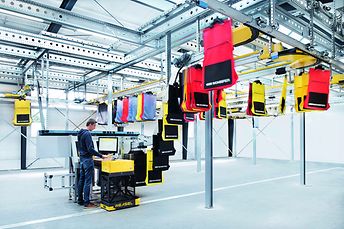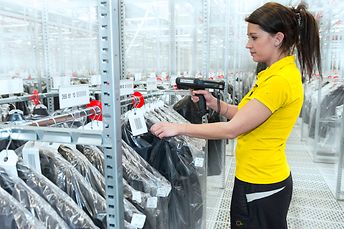Innovative Integrated System for Omni-Channel Distribution
Anyone who has tried to manage order processing for B2B and B2C from a single DC can appreciate the complexity. Requirements for B2B of B2C order fulfilment are so different.
While B2B supply to stores or wholesalers involves periodic delivery cycles, relatively limited order lines, many items per line and a targeted number of delivery addresses, B2C is characterized by rapid, ad-hoc deliveries of small quantities at short notice.
How do DCs manage these different requirements? Maintaining separate storage locations or order-picking zones is one option. However, this inevitably raises supply chain costs, increases inventory levels and compromises process efficiency, therefore it is not ideal.
SSI Schaefer has developed a concept which can help you to cut through the complexity. Called Fulfilment Factory or FFF in short, it brings together standardized systems to enable you to address the special demands of omni-channel distribution using just one integrated system. FFF also enables you to handle several brands, or even completely different product range in the same DC.
What does it involve?
At the heart of the FFF is the overhead conveyor system, which is commonly used for the Overhead Conveyor system distribution of hanging garments (GOH). It is inexpensive and can achieve high throughput.

In the FFF, products, regardless of whether they are shoes, toys, household appliances or cosmetics, are individually slotted into RFID enabled carriers and automatically moved to the required location by using the overhead conveyors. This offers unmatched flexibility – the products can be conveyed, buffered or sequenced as required by the operation.
The FFF also employs:
batch picking – an efficient picking process which maximizes pick quantities;
buffering for a multitude of functions – for returned products, spillovers from full carton pick as well as early picks; and
sequencing of picked items to optimize packing or loading.
How does it all work?
At the infeed station, products are individually received from the pick totes, scanned and then fed into bags or boxes. By bagging or boxing the products one by one, the system can automatically link the products to the carrier RFID tag, which is then used to route the carrier through the system.

Products requiring short term storage are then routed to the dynamic buffer, which is basically a series of conveyor carousels allowing quick retrieval to fulfil orders. By buffering products, the DC can eliminate the time-consuming task of storing the products, then retrieving them. Therefore products can be picked in batches and moved to the dynamic buffer. With the overhead conveyor, the products can be easily sorted before being routed away automatically.
The FFF also works off orders in the right sequence with the correct amount of articles using a device called the Matrix Sorter. It sequences the products in a picking batch, bringing together all the items for a particular order. The conveyor then routes the collated orders to available packing stations.
A modular system, the FFF can be tailored flexibly to the user’s logistical requirements across all sectors in terms of a range of items, production volumes, spread over various sales channels and type and structure of picking orders.
For more information on the FFF, check out any SSI Schaefer representative across the region for assistance.